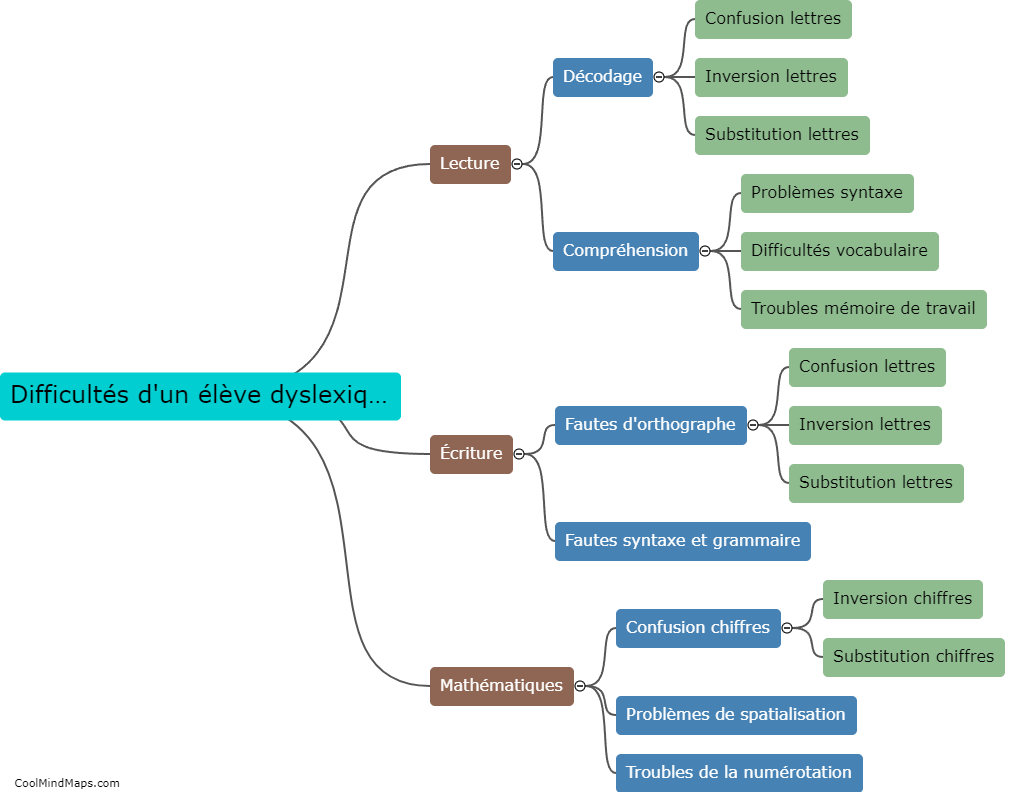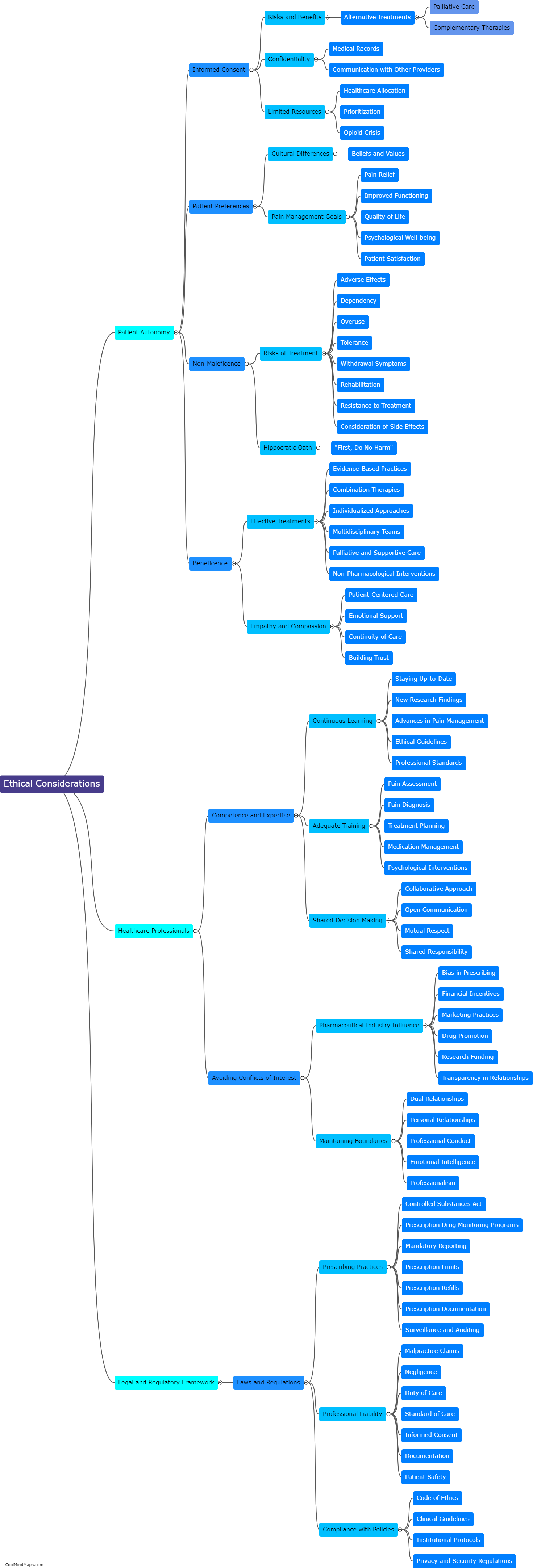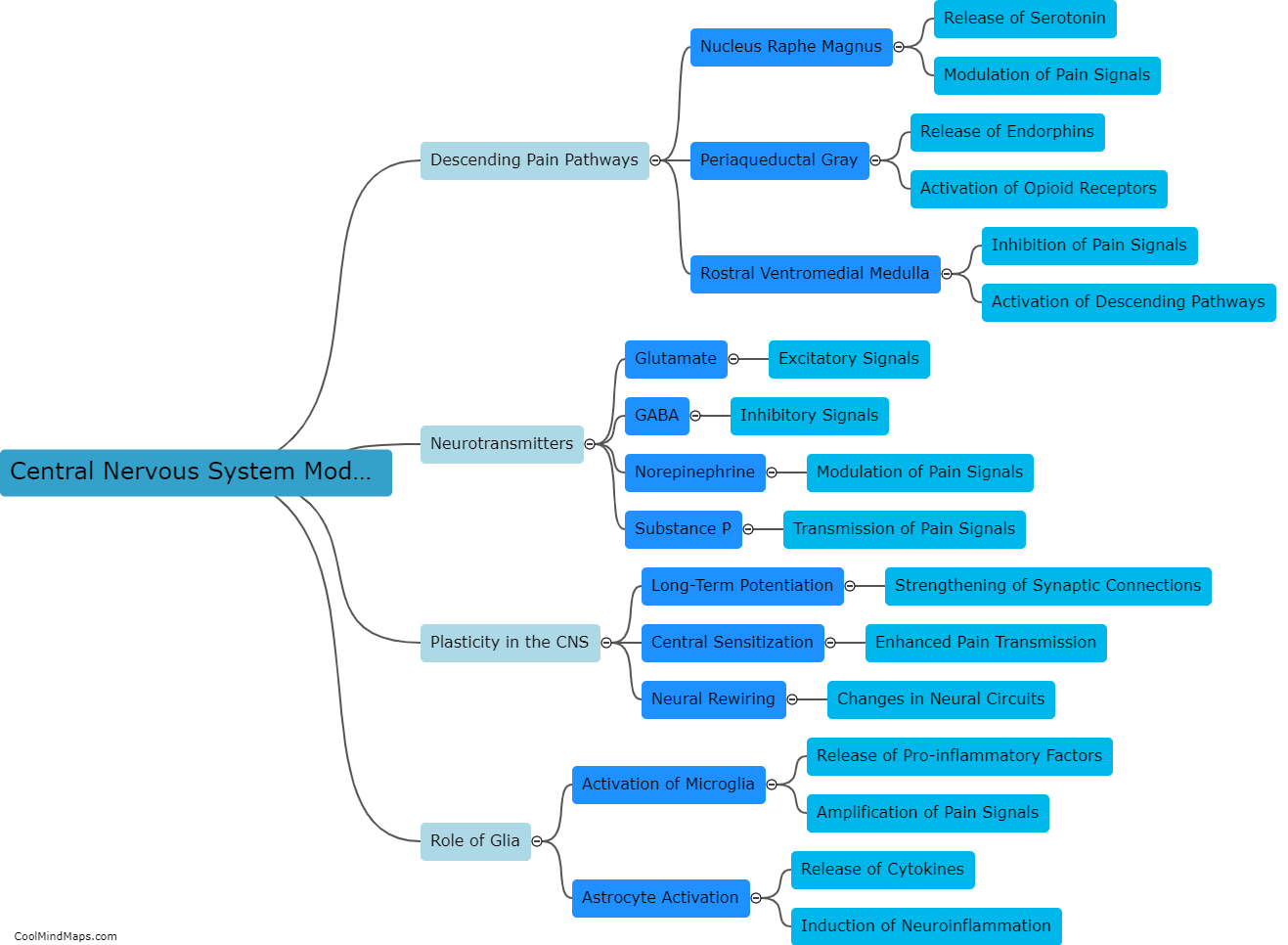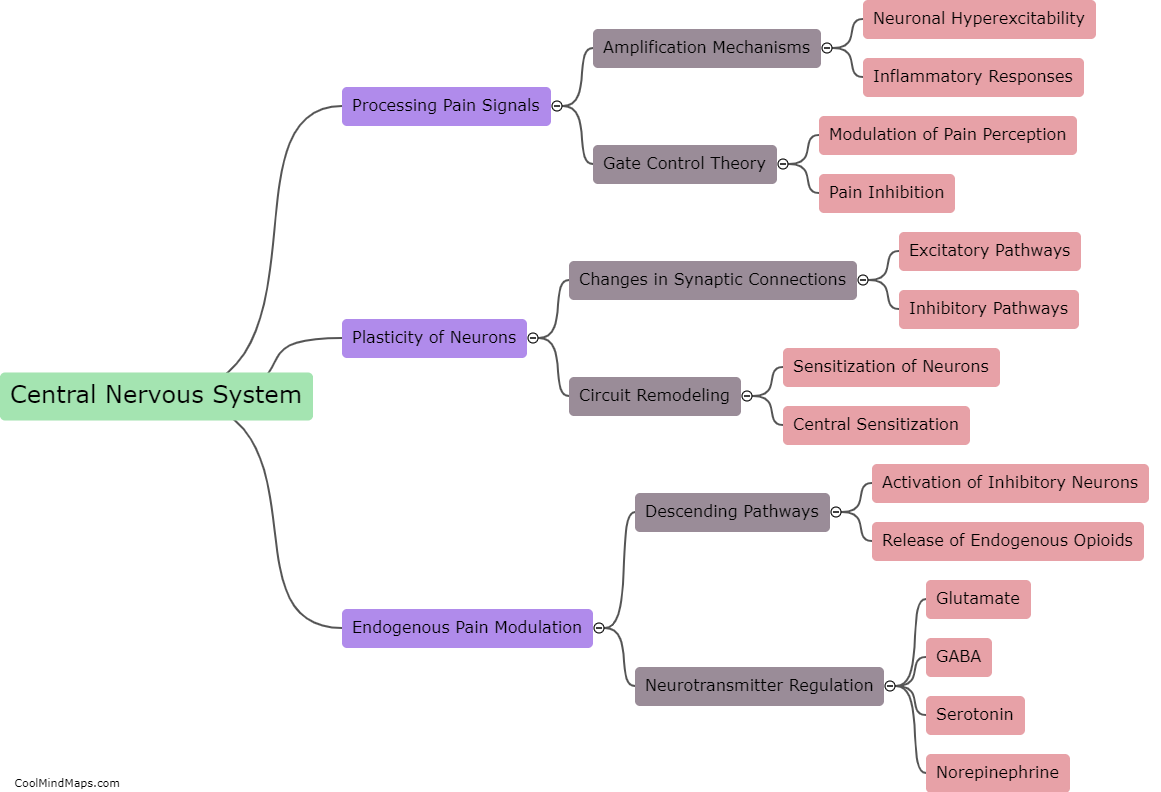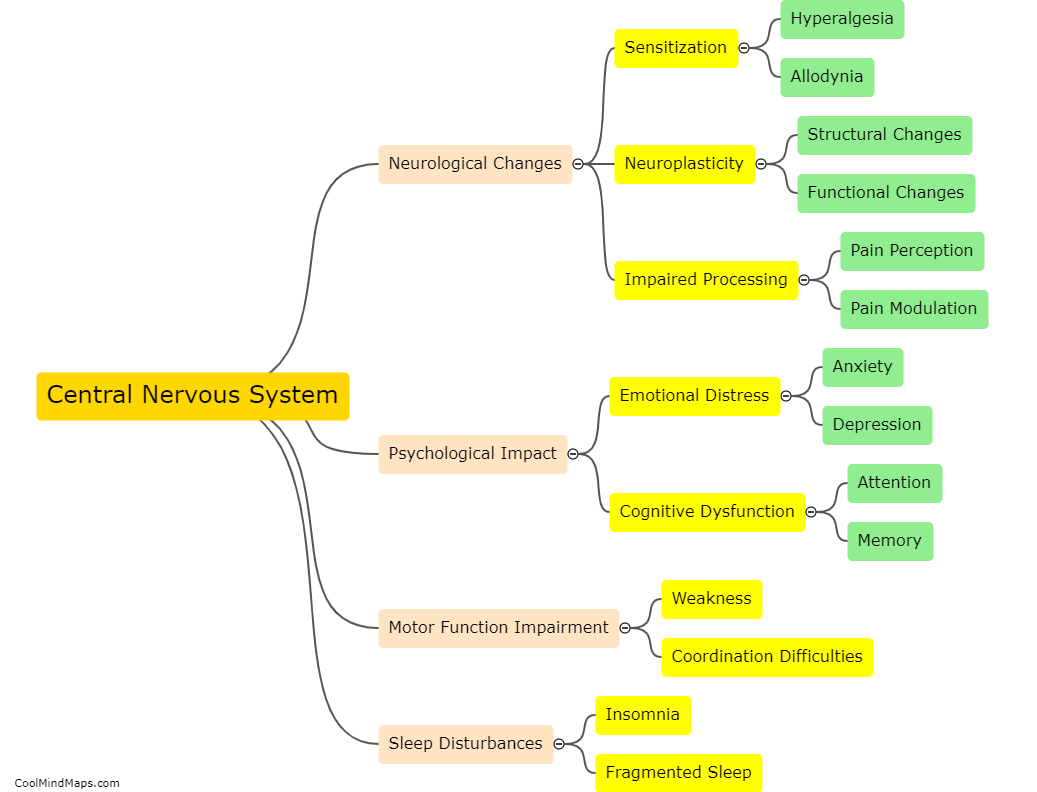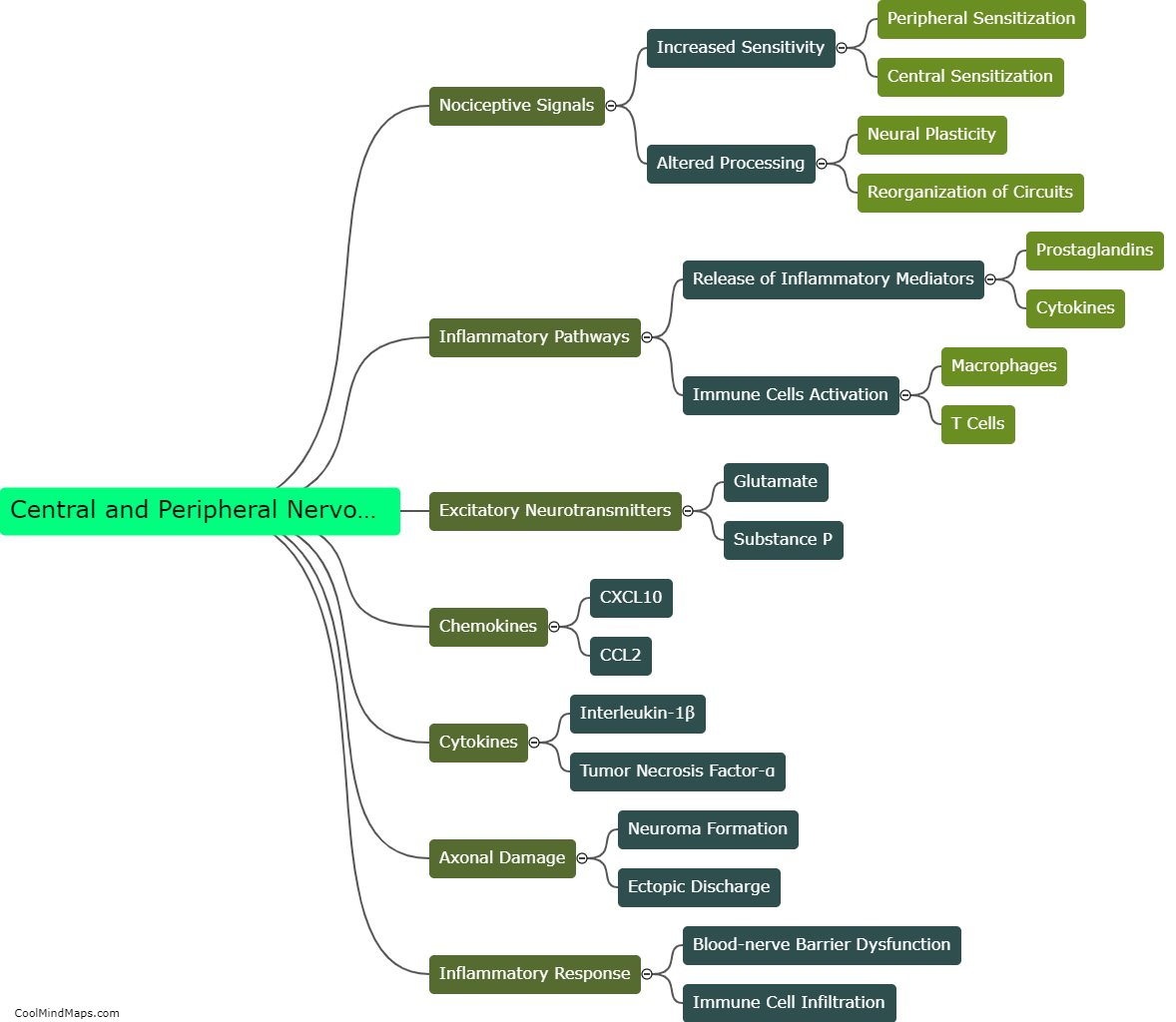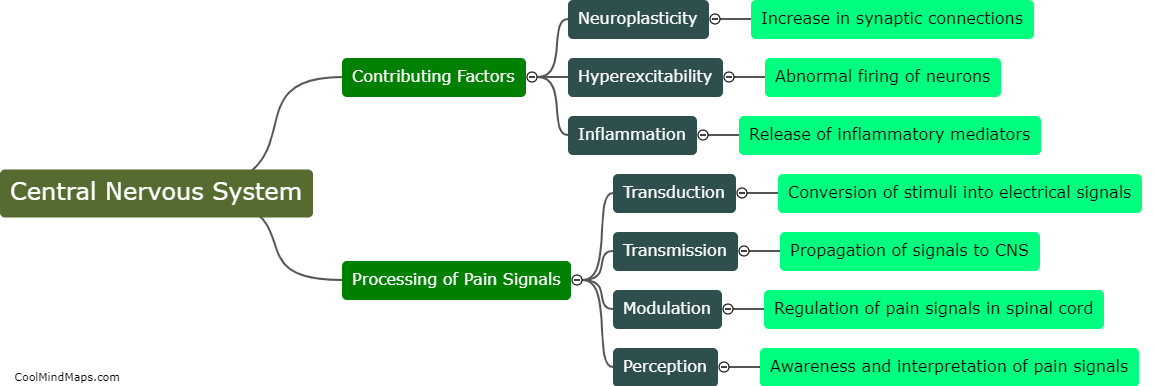What are the interactions between the central and peripheral nervous system in chronic pain?
Chronic pain is a complex condition that involves intricate interactions between the central and peripheral nervous systems. The central nervous system, including the brain and spinal cord, plays a crucial role in processing and interpreting pain signals received from the peripheral nervous system. When tissue damage or inflammation occurs, peripheral nerves transmit the pain signals to the central nervous system. In chronic pain, these pathways become dysregulated, leading to heightened pain sensitivity and altered pain processing. The central nervous system may amplify pain signals, leading to the persistence of pain even after the initial source of injury or inflammation has healed. Additionally, the central nervous system can modulate the perception of pain through neuroplastic changes, such as increased sensitivity or decreased inhibitory control. Therefore, the interactions between the central and peripheral nervous system in chronic pain are multifaceted and contribute to the complexity of this condition.

This mind map was published on 2 December 2023 and has been viewed 159 times.


